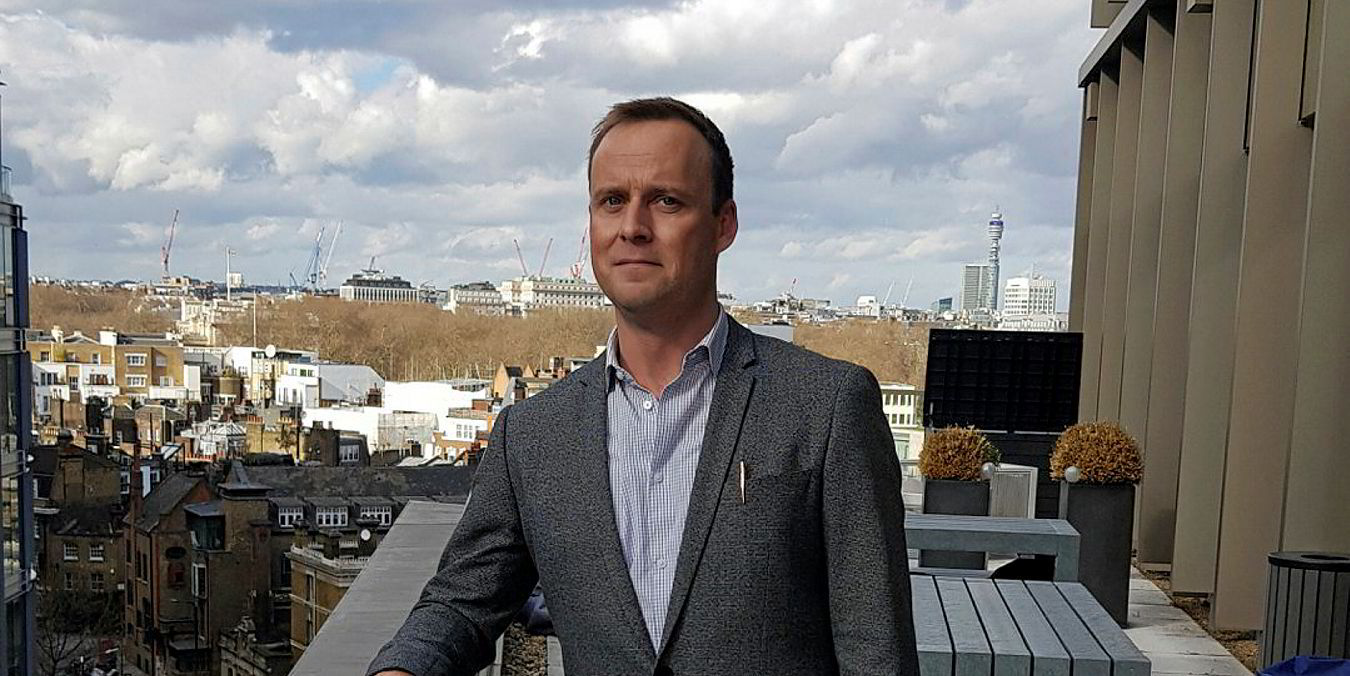Jan Wilhelmsson compares what Navig8 Group is doing with its ships to what a person might do with a Fitbit, the wrist-worn activity tracker.
But where the enemy of the human is indolence and inertia, the foe to overcome in Navig8’s “wiring up” of more than 100 of the estimated 200 ships in its pools is inefficiency and waste.
“Waste reduction is the key focus. It’s how we make more money. We spend less in waste,” Wilhelmsson, Navig8’s chief digital officer, tells TradeWinds.
Installing electronic sensors has been challenging, he adds, but the actual hardware is just the start of the process.
Trailblazers
Although the world’s largest commercial tanker manager is nowhere near a pioneer in the practice — the trailblazers are cruiseship and containership operators that started a decade ago — Navig8 does feel it is among the leaders in understanding and responding to the data flow.
In practical terms, Navig8 can gain real-time assessments of how factors such as hull-fouling marine growth and rough weather affect transit speeds and fuel efficiency. This allows it to correct its practices in real time.
“The first effect we’re going to see is increased efficiency through waste reduction,” Wilhelmsson says. “Some of the simplest things possible — orders get misunderstood, vessels aren’t always sailing at the speed that they’re supposed to.
“There are judgement calls left, right and centre. But as soon as everything’s live, that waste just disappears by itself once you’ve incorporated the process into your business.”
Navig8 strives for optimisation, but the picture is not always simple.
“What is the correct speed from a physical perspective, from a minimum-emissions perspective, from a highest-earnings perspective? That’s where you start having a lot of loose ends,” he says.
“That’s where it gets really complex, because you start having to bring together data from a lot of different sources, and that’s where we’re doing a lot of work right now.”
The first effect we’re going to see is increased efficiency through waste reduction. Some of the simplest things possible — orders get misunderstood, vessels aren’t always sailing at the speed that they’re supposed to
Jan Wilhelmsson
Wilhelmsson comes to all this from a shipping background. His previous job in mainstream shipping was with Wallenius Wilhelmsen Logistics, where he was head of Oceania Trades, the liner service to Australia. Despite the similarity of names, he is not related to the Wilhelmsen family.
He jokes that he “turned tech guy” only six years ago, and was working at a data-collection company within the Wartsila group before joining Navig8 in London.
Getting busy
Although bulk shipping was well behind the digital curve compared with the cruise and container sectors, Navig8 was getting busy, he says.
“When I came in here in 2017, they were pretty well along in wiring up the ships. Navig8 has been pretty early on that internally by any comparison,” he says.
“The problem was that the pool vessels weren’t yet there, and it took a lot of work to figure out how we can, at an affordable cost, do this in a scalable way for ships we don’t own ourselves.”
The problem goes to Navig8’s multiple roles. It is a vessel owner, currently with product and chemical carriers. It is a charterer of tonnage for its own pools. And it is a commercial manager of third-party entries into the pools.
The company’s approach to digitalisation was to treat the various categories differently.
For tonnage it owns or controls, it has been carrying out more extensive installation of electronic sensors and managing the fuller data streams generated.
For the pool vessels, the installations are lighter — “just enough data to commercially operate the vessels”, Wilhelmsson explains. “On light installation, it’s one or two days — it can usually be done in a single port call”, and the cost can be as low as $5,000.
Obviously, we would never contract with a supplier who isn’t very well vetted from a cyber security standpoint. But we sometimes need to go through the hoops over a longer period to convince some parties
Jan Wilhelmsson
More extensive installations in the cruise and container sectors can take six to 12 months and cost $500,000 or more: “There’s almost no upper limit as to cost.”
Although that is unrealistic for Navig8’s purposes, the heavier installations on its controlled tonnage can take weeks and cost between $50,000 and $100,000
Meeting resistance
The notion of placing monitors on ships owned by other people has met resistance, although this has gradually diminished as the benefits become clear.
“Whether it’s here at Navig8 or when I was on the supplier side, there’s always resistance,” Wilhelmsson says. “It’s about the unknown. We’re a bit traditional in our industry and people have various concerns about what side effects could happen.
“Obviously, we would never contract with a supplier who isn’t very well vetted from a cyber security standpoint. But we sometimes need to go through the hoops over a longer period to convince some parties.
“I think there will be a day when this becomes natural. Just as you come in and you take a job and you get a cellphone and just use it. You don’t start questioning, ‘Does this particular phone have this and that data security’.”
One way Navig8 gives pool partners an incentive to install monitoring devices is by letting them keep the technology when it is time for their ships to leave its pools.
“We just say, ‘Congratulations, keep the equipment’,” chief digital officer Jan Wilhelmsson says. “We write it off because we know that it’s going to represent a few tonnes of fuel, but we’ll have that multiple back even within those 12 months they’re in the pool. The pool wins, so the pool owns the cost.”
Increasingly, Navig8 finds that newer ships entering its pools have already had digital monitors installed by the vessel’s owners. In those cases, it is able to adapt its systems to those data feeds, eliminating the need to supply its own sensors.
“Especially on newer vessels, it is becoming quite common to install such devices, and that helps us,” Wilhelmsson says.
“Where the industry hasn’t gotten as far yet is how to effectively utilise this data. Wiring up the ships can be a massive project, but at the end of the day, it’s just plumbing. When a business has been given access to the data in a way that is effective, that’s the key, and that’s the phase that we’re working in right now.”






